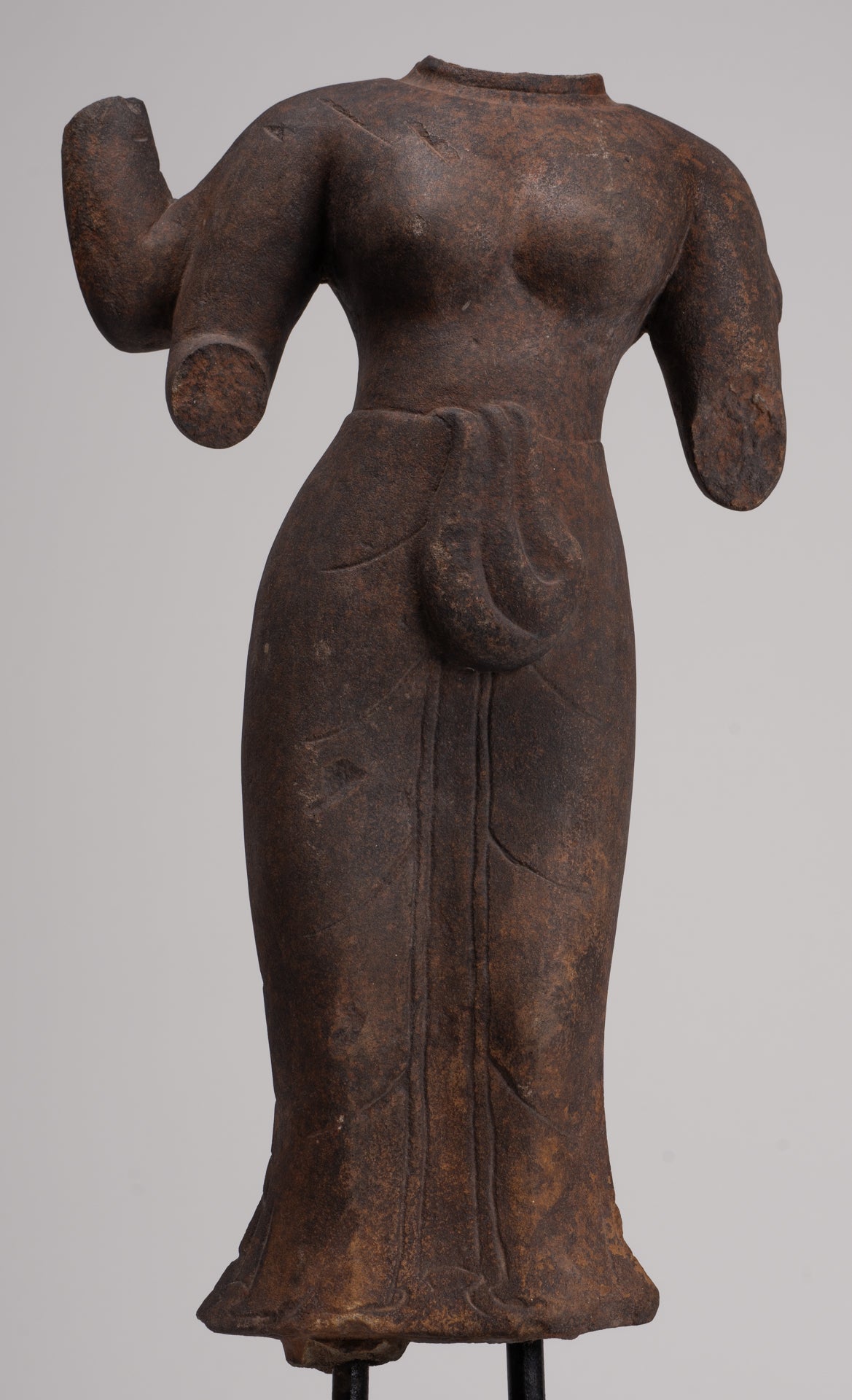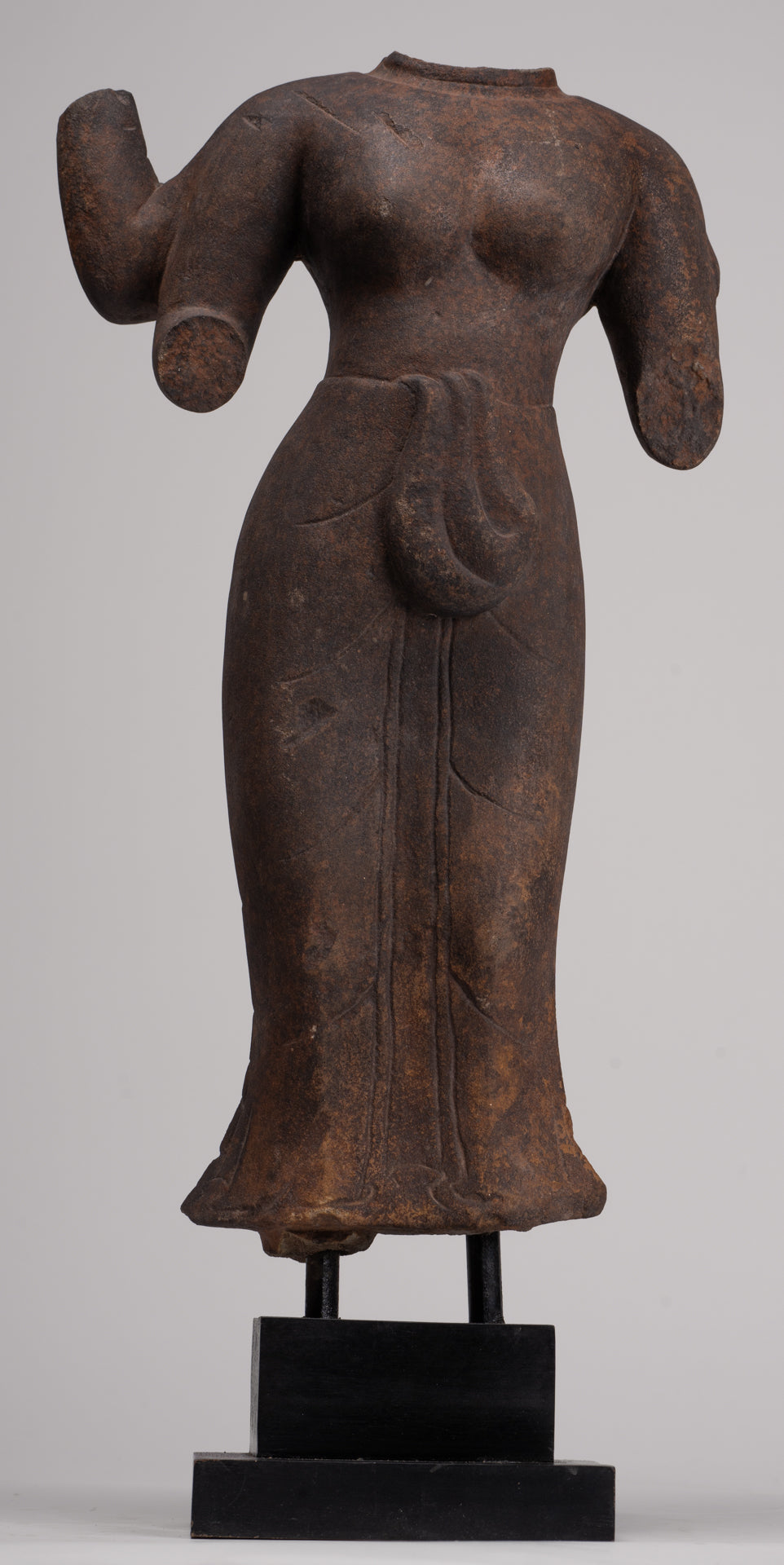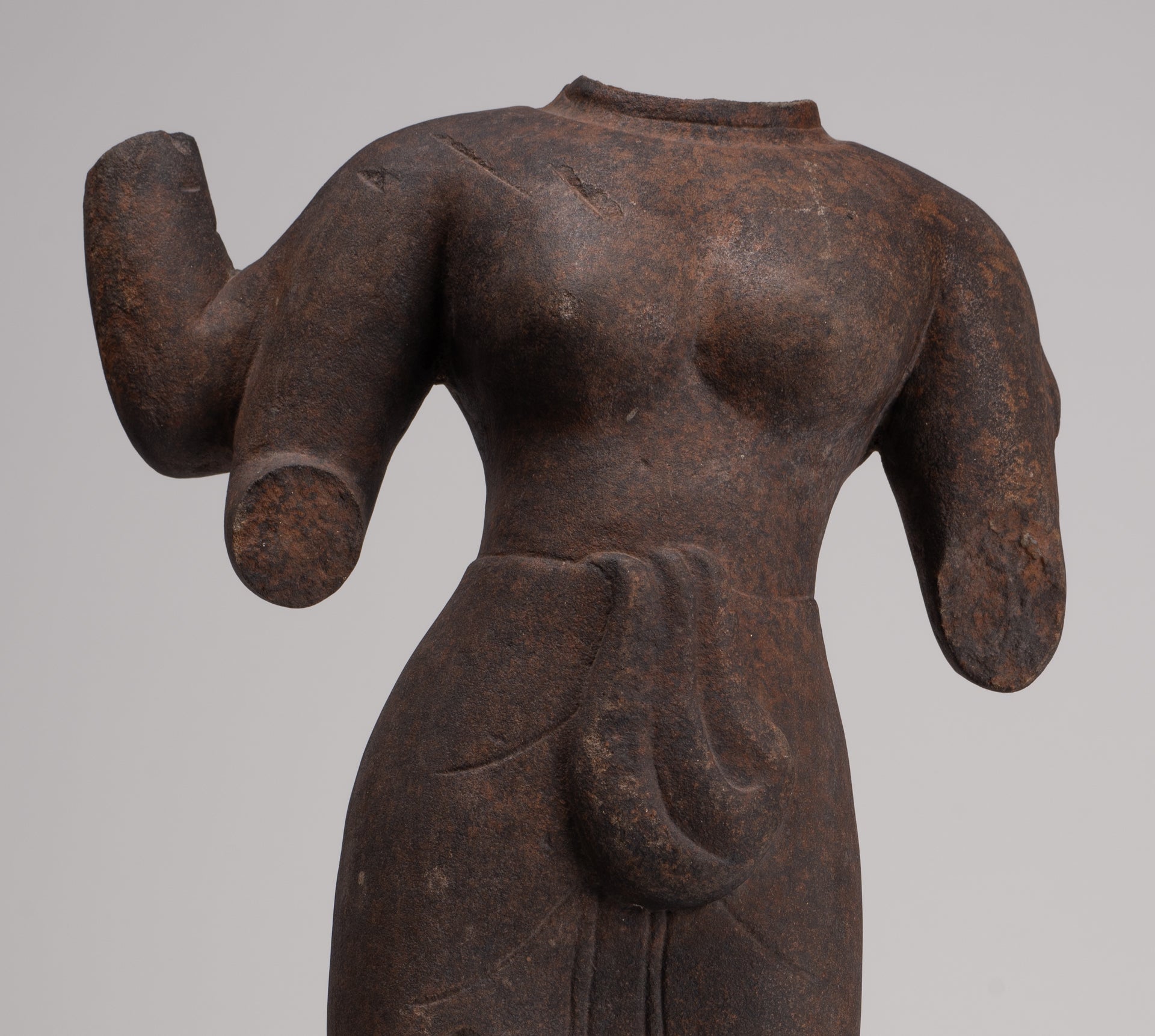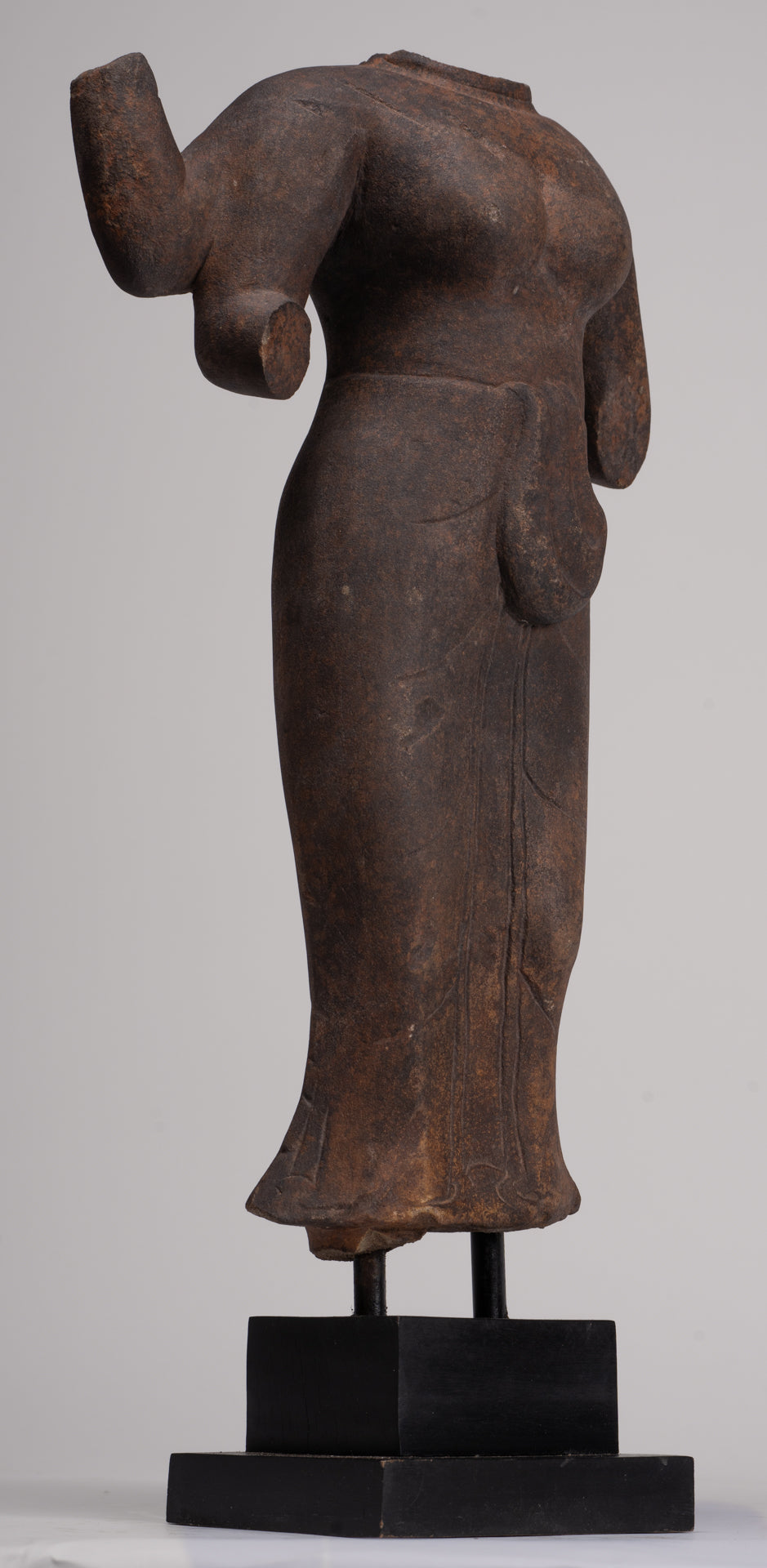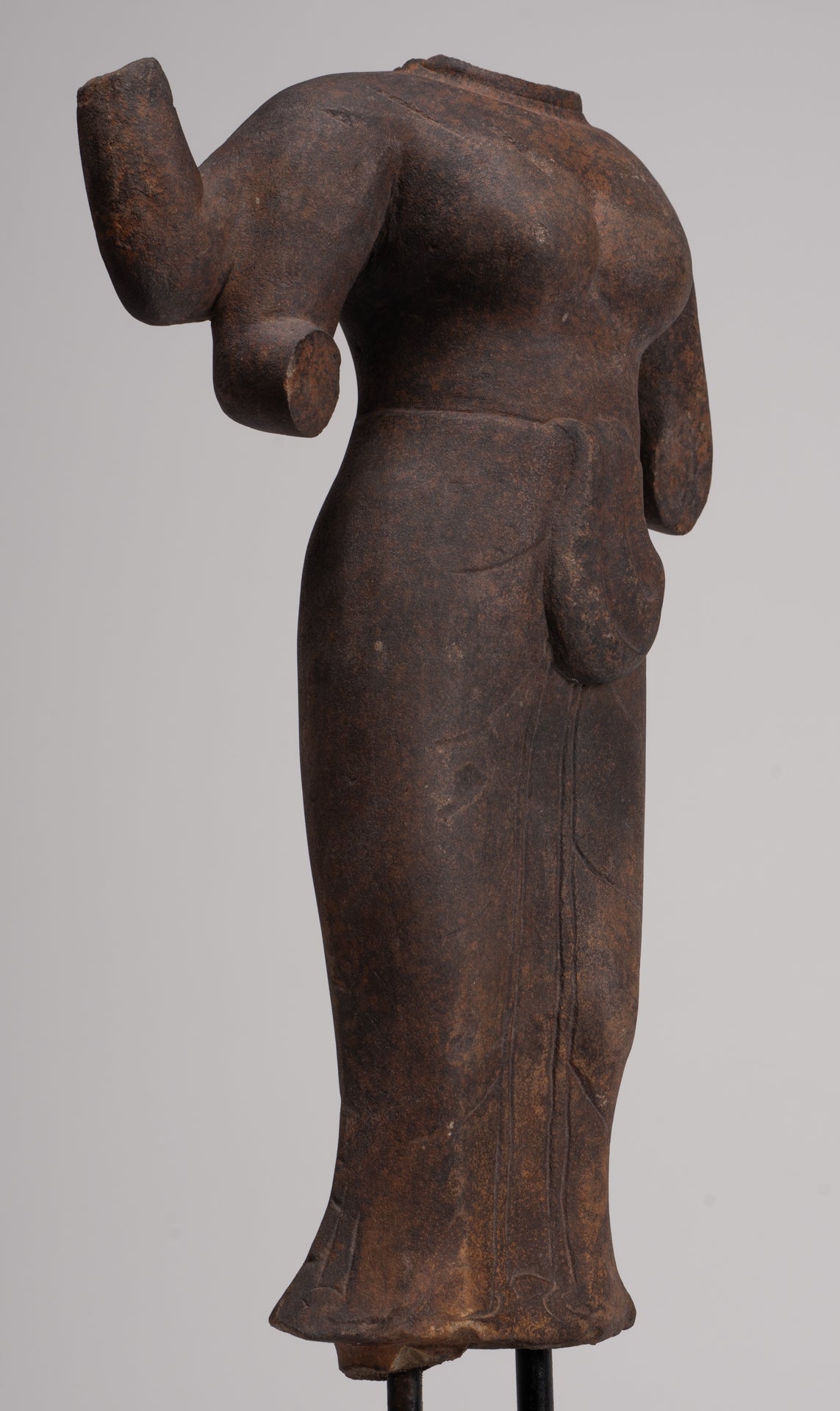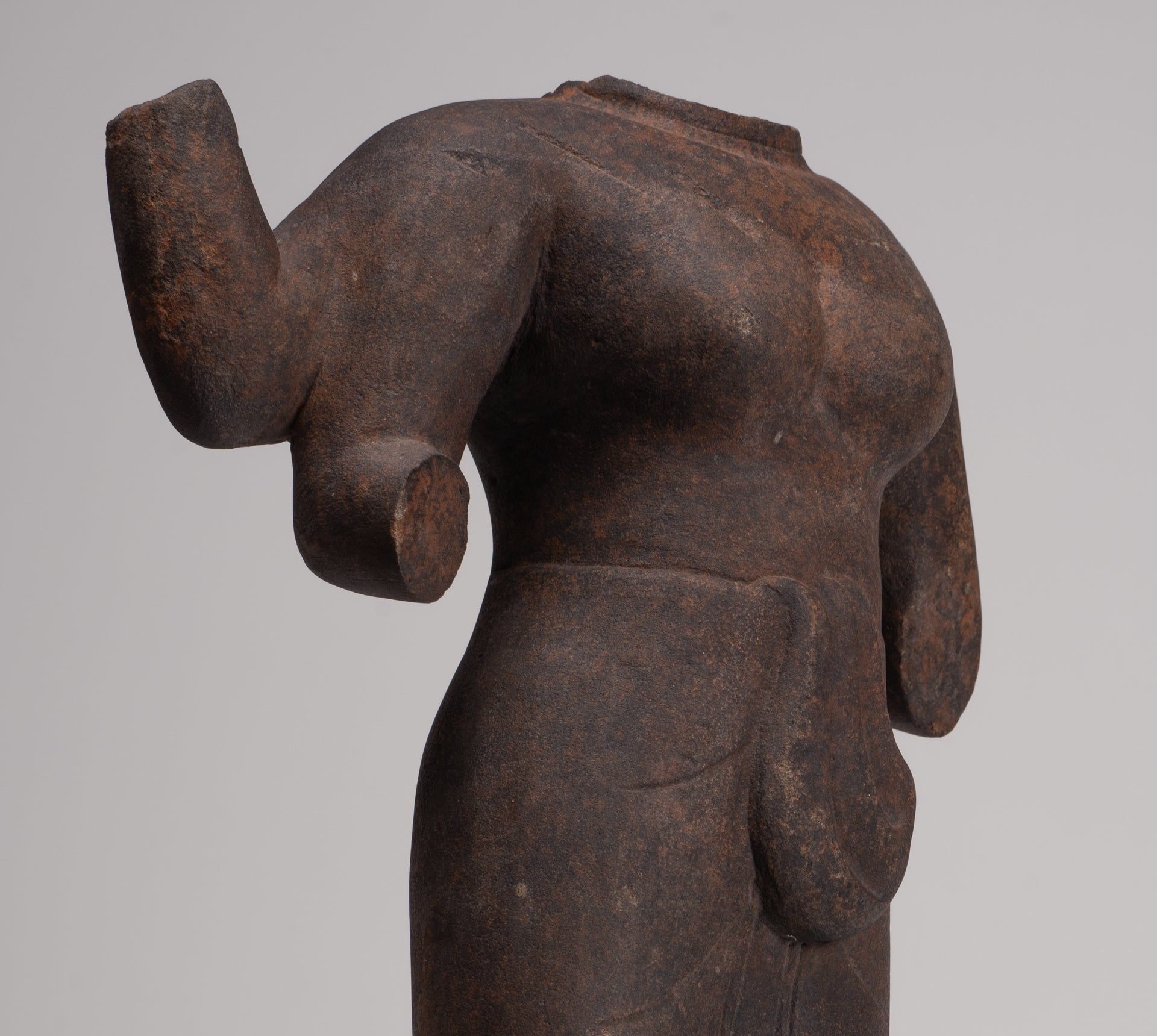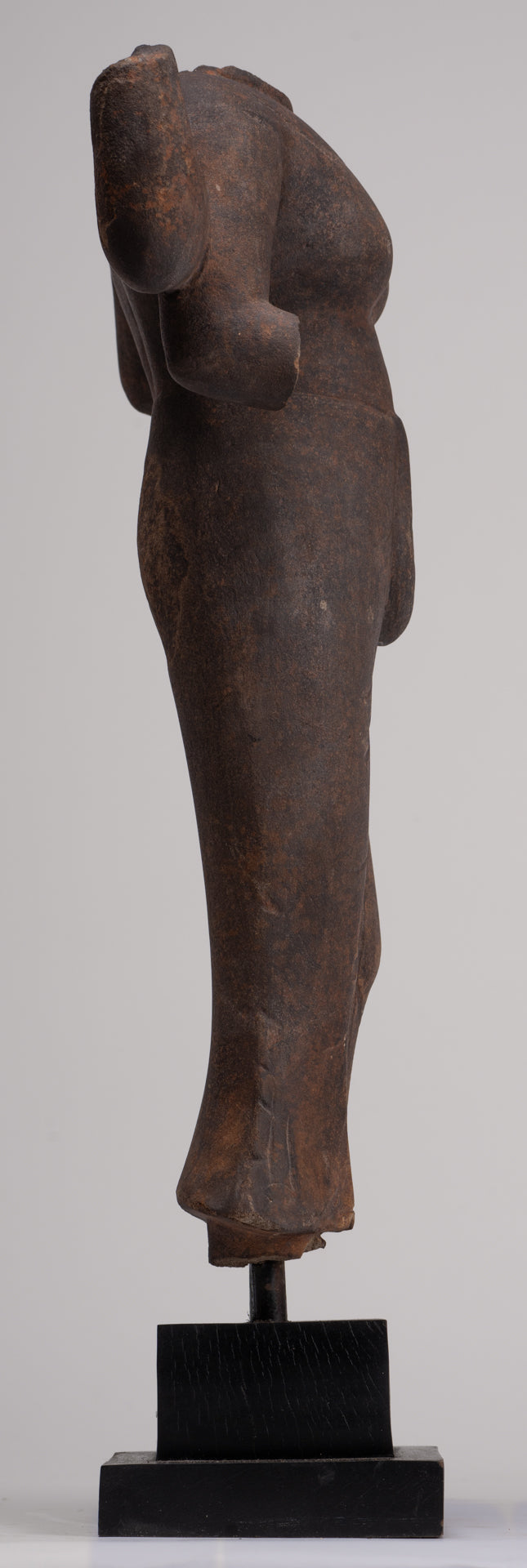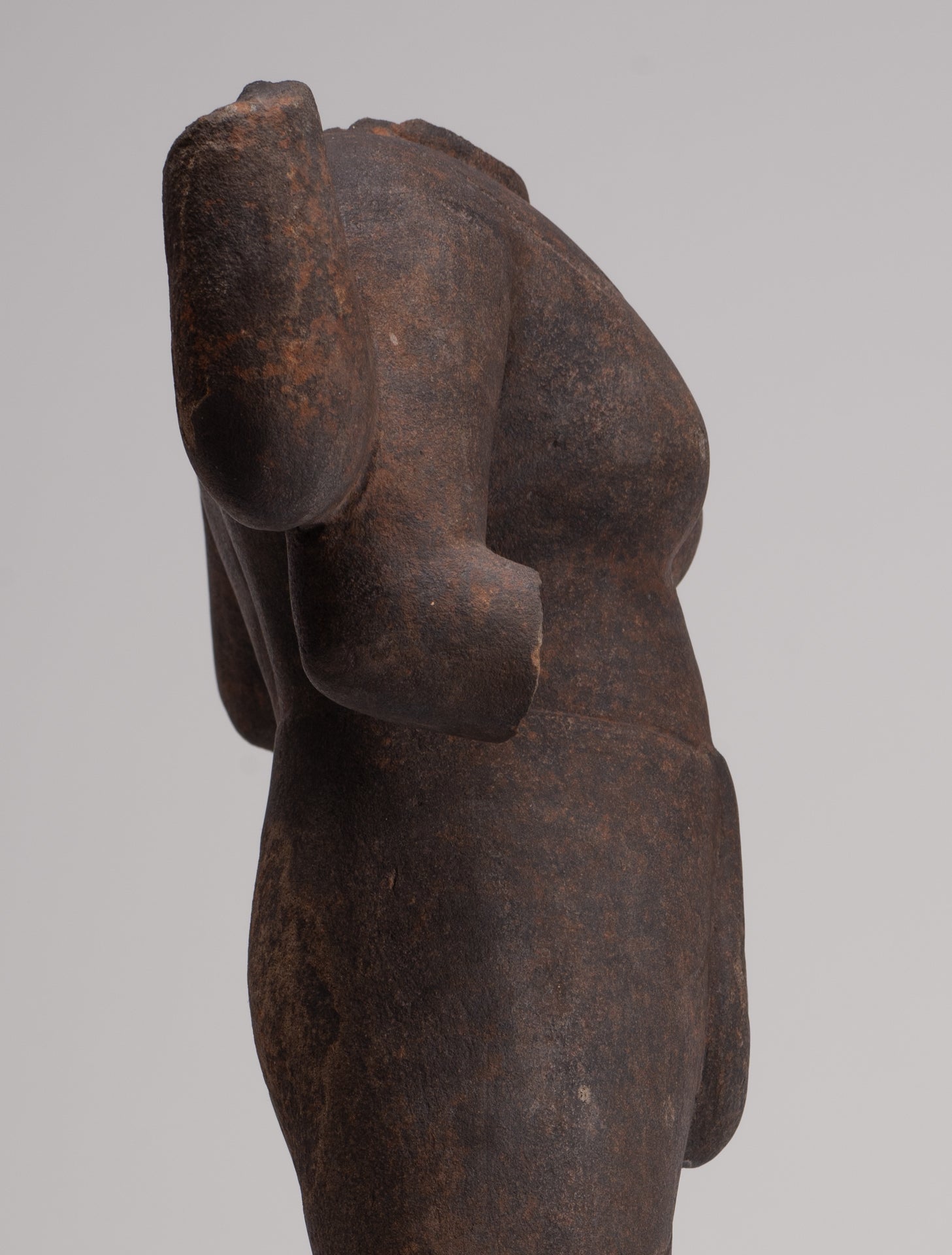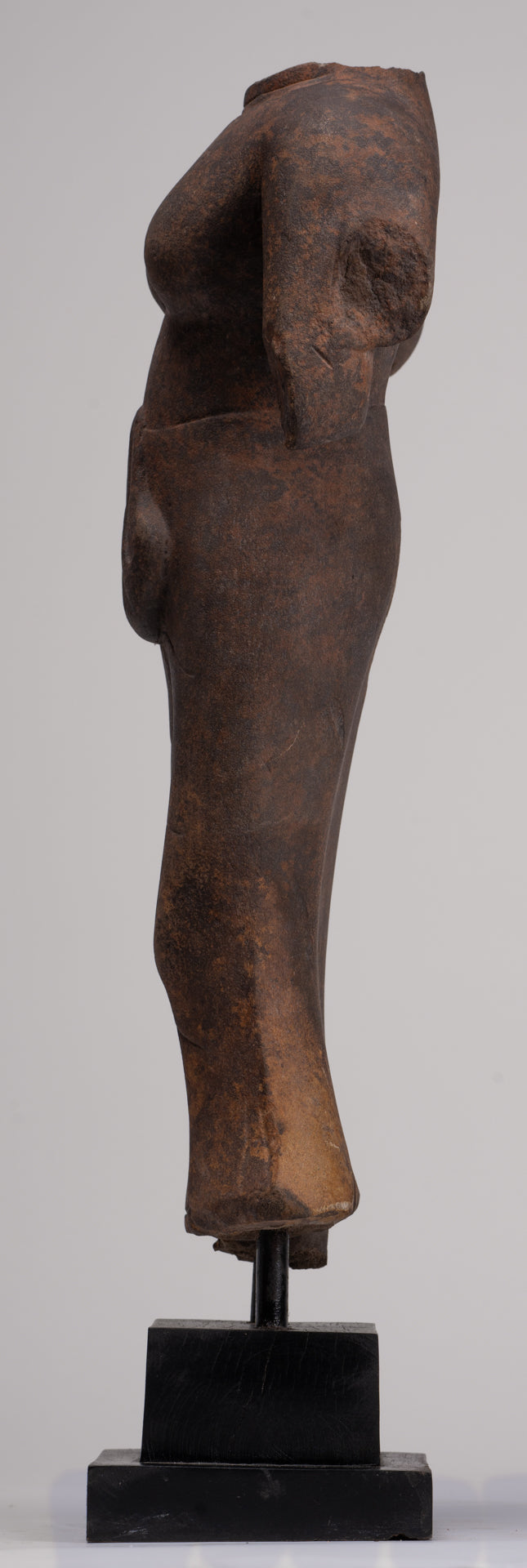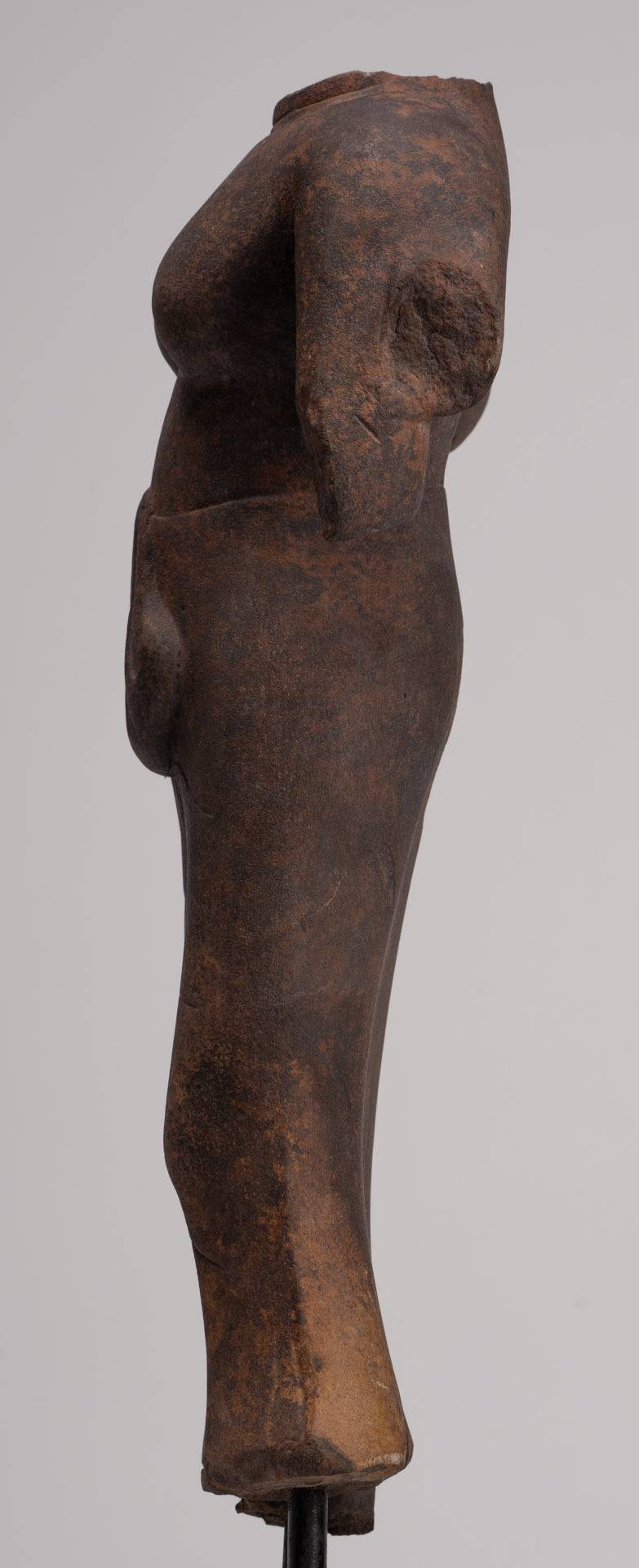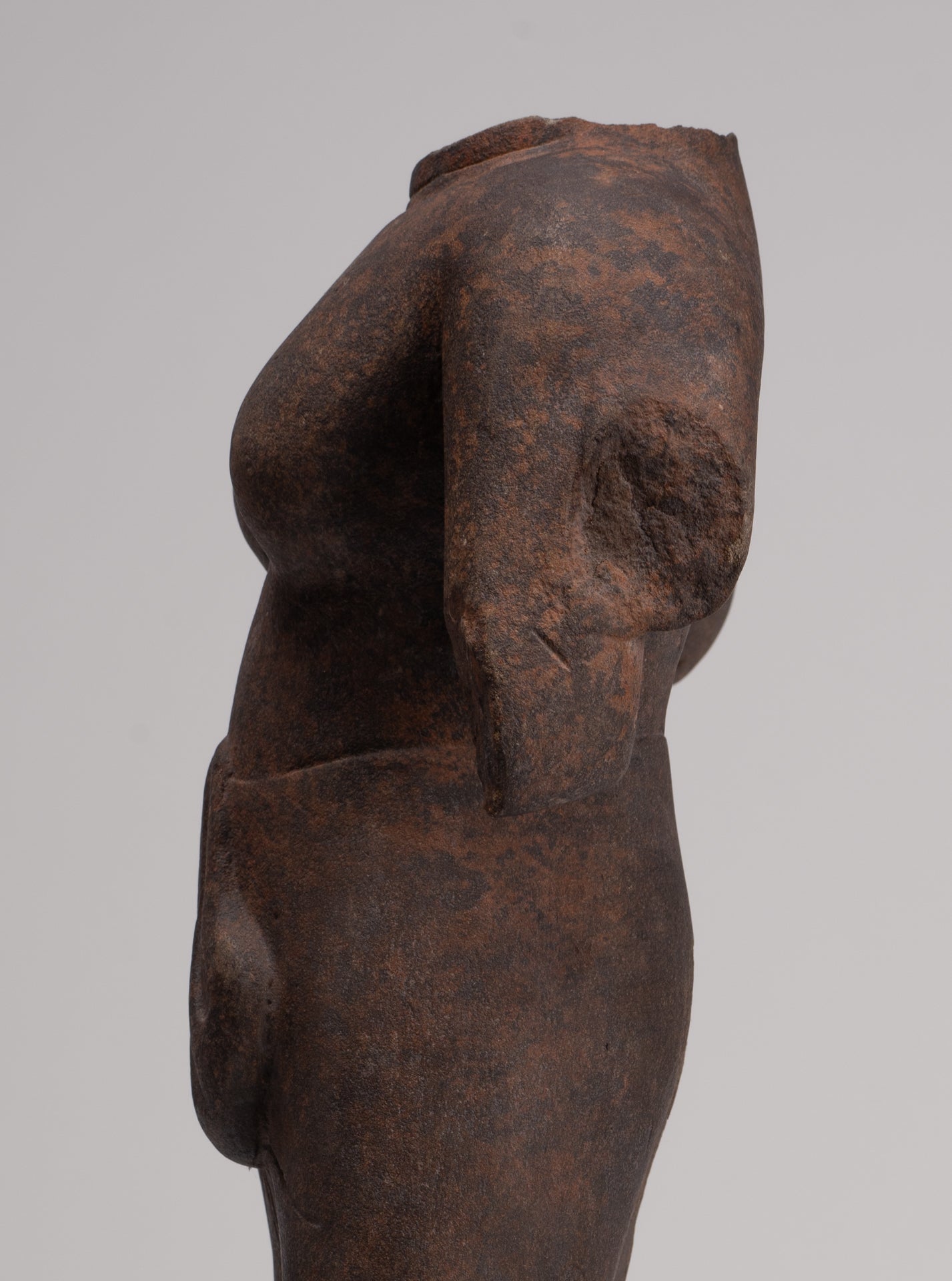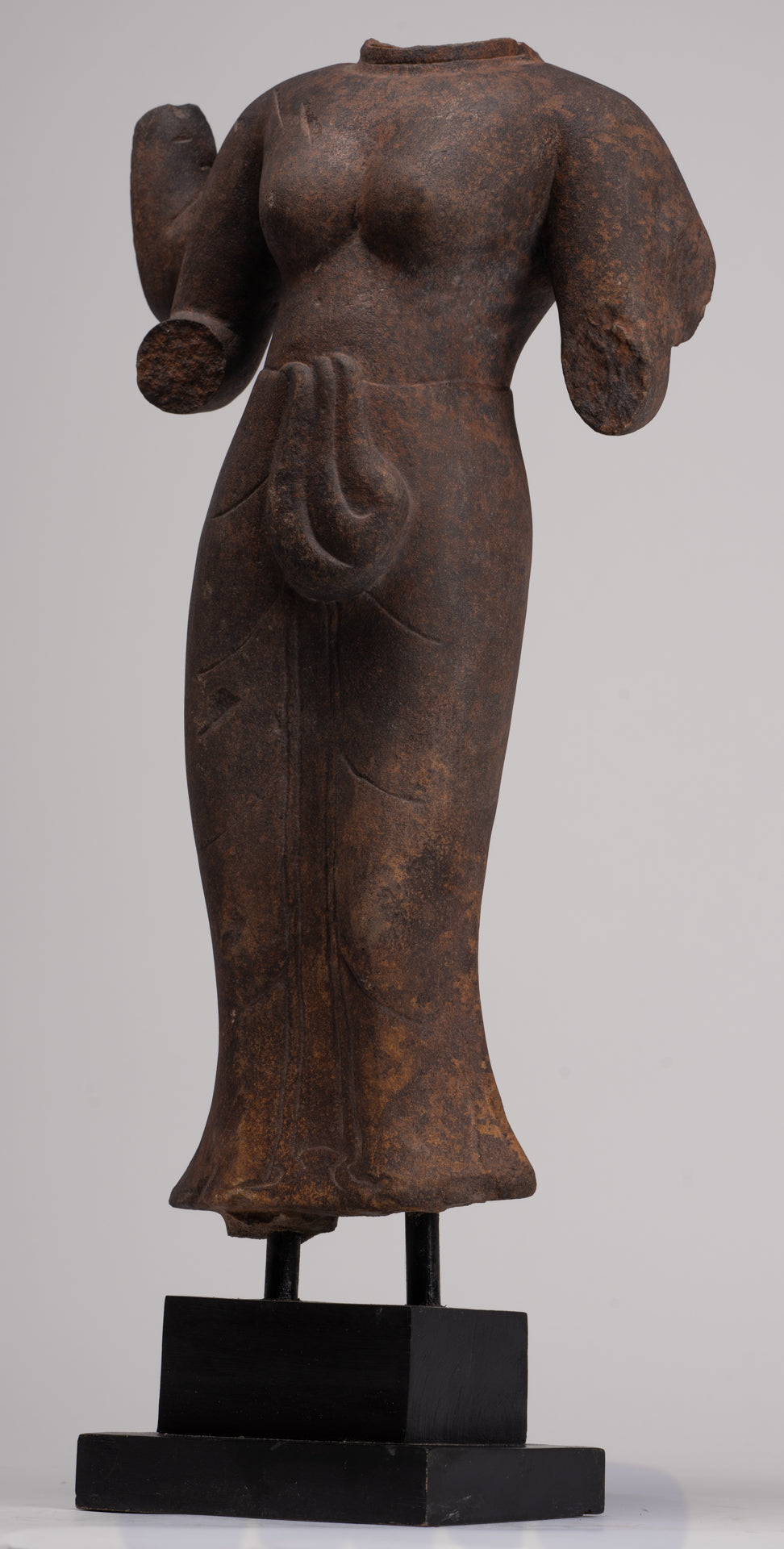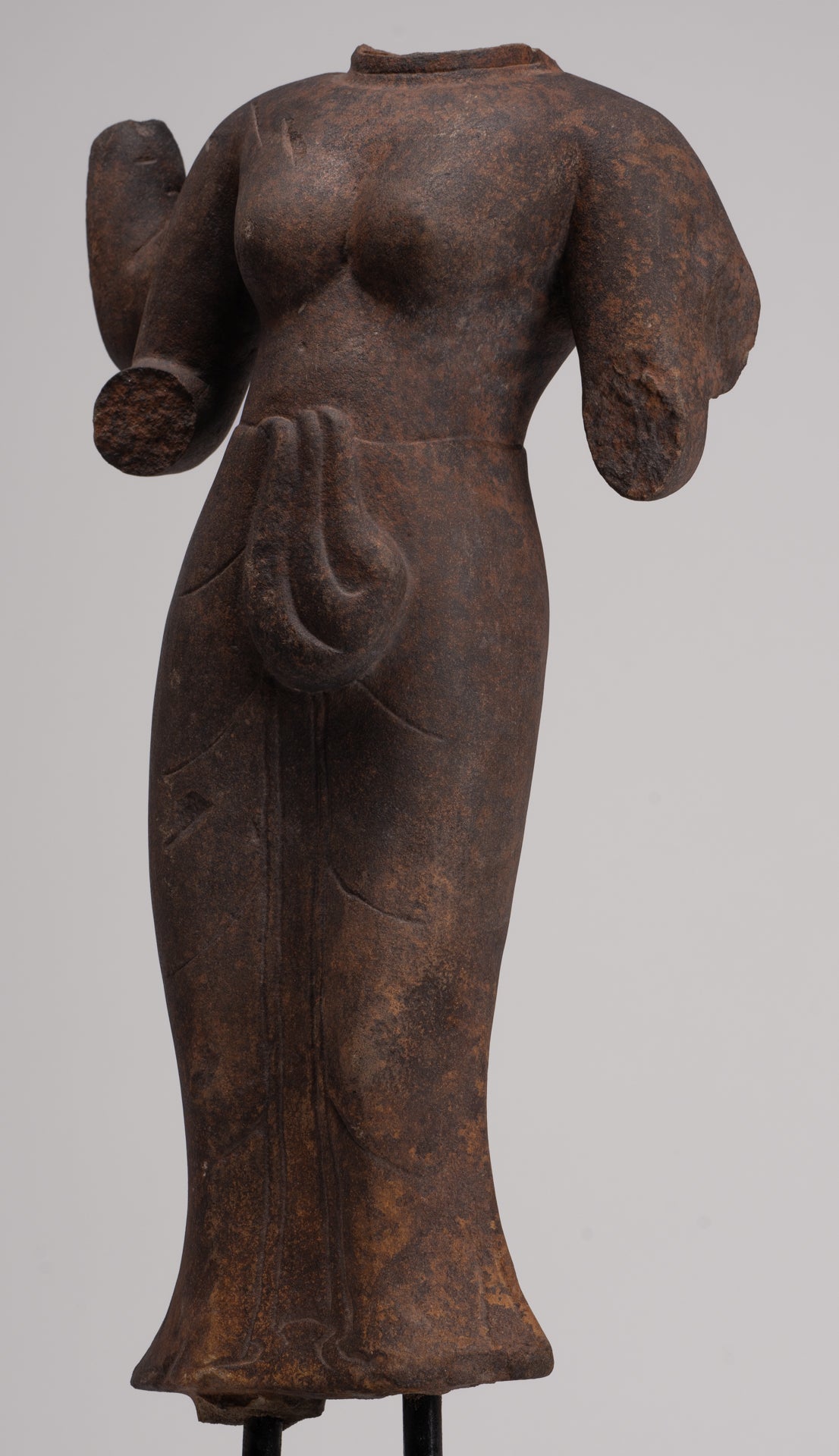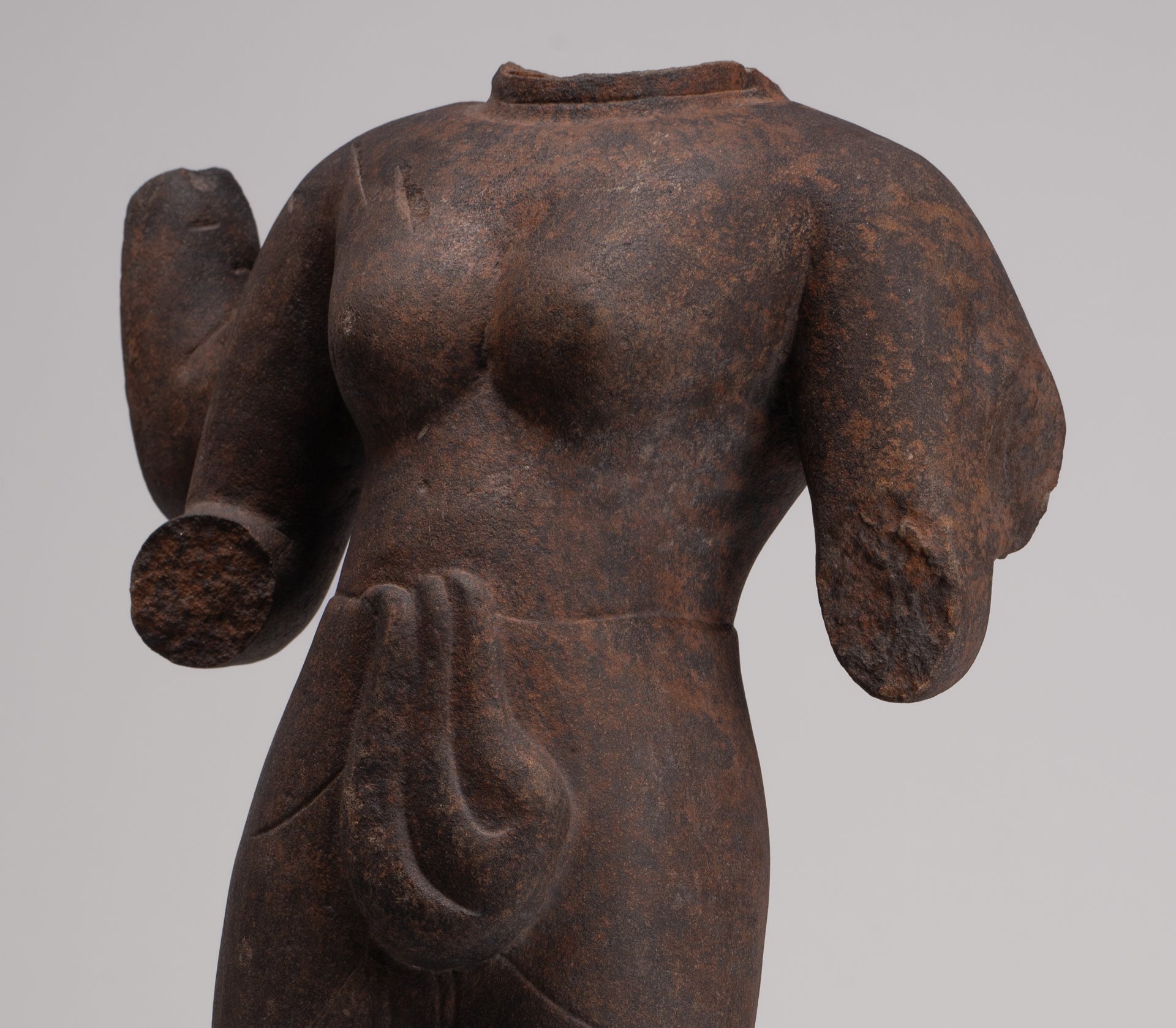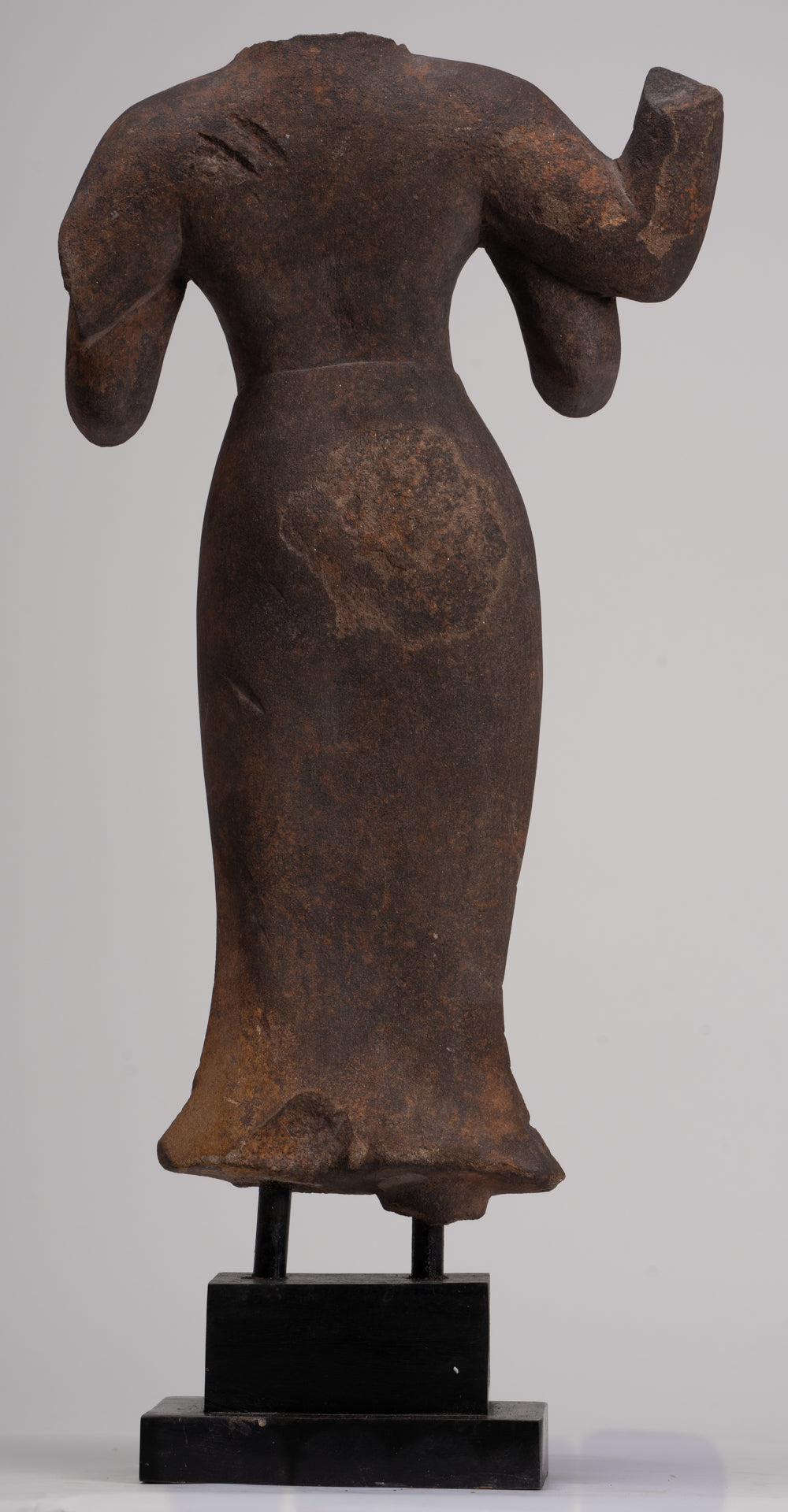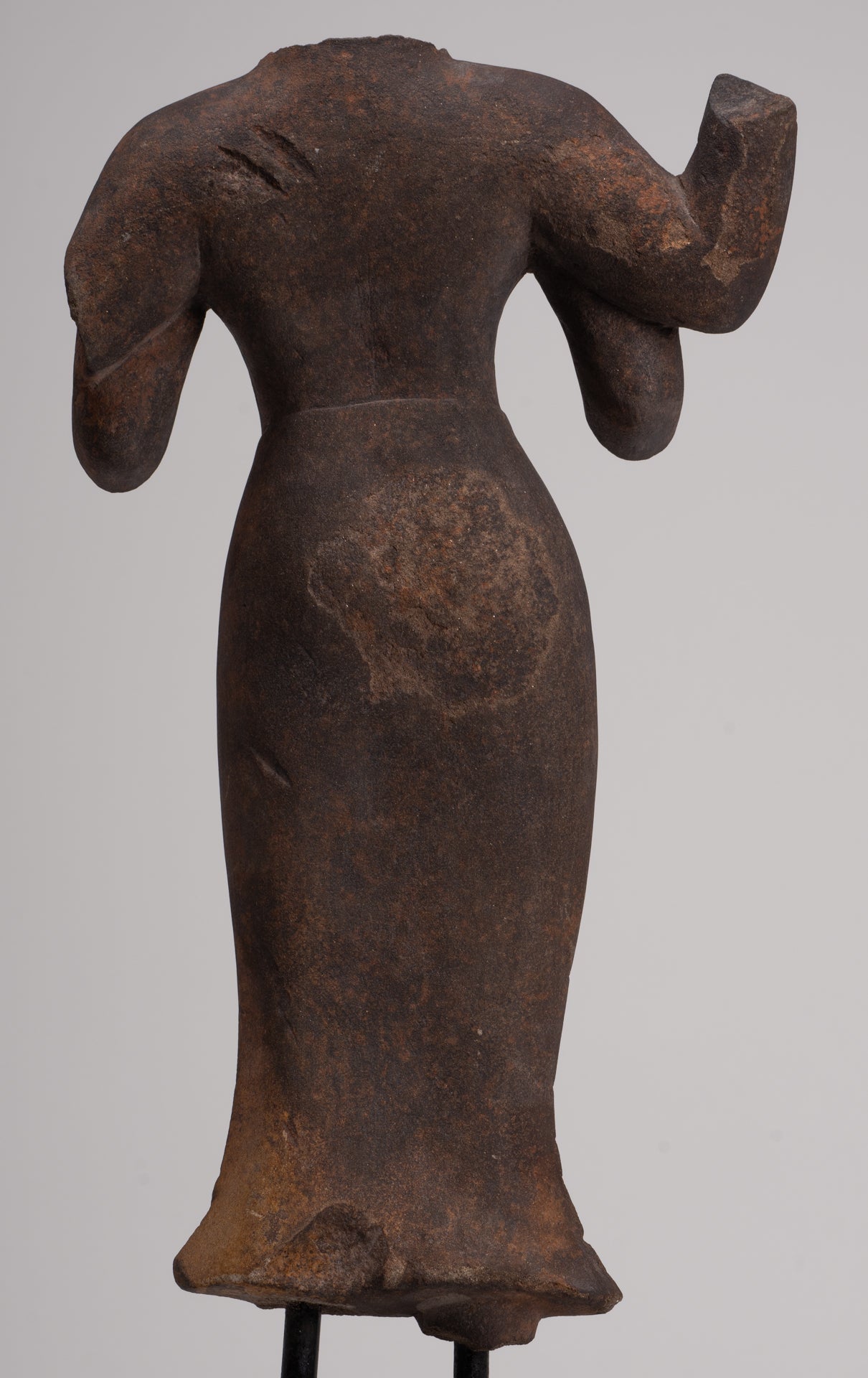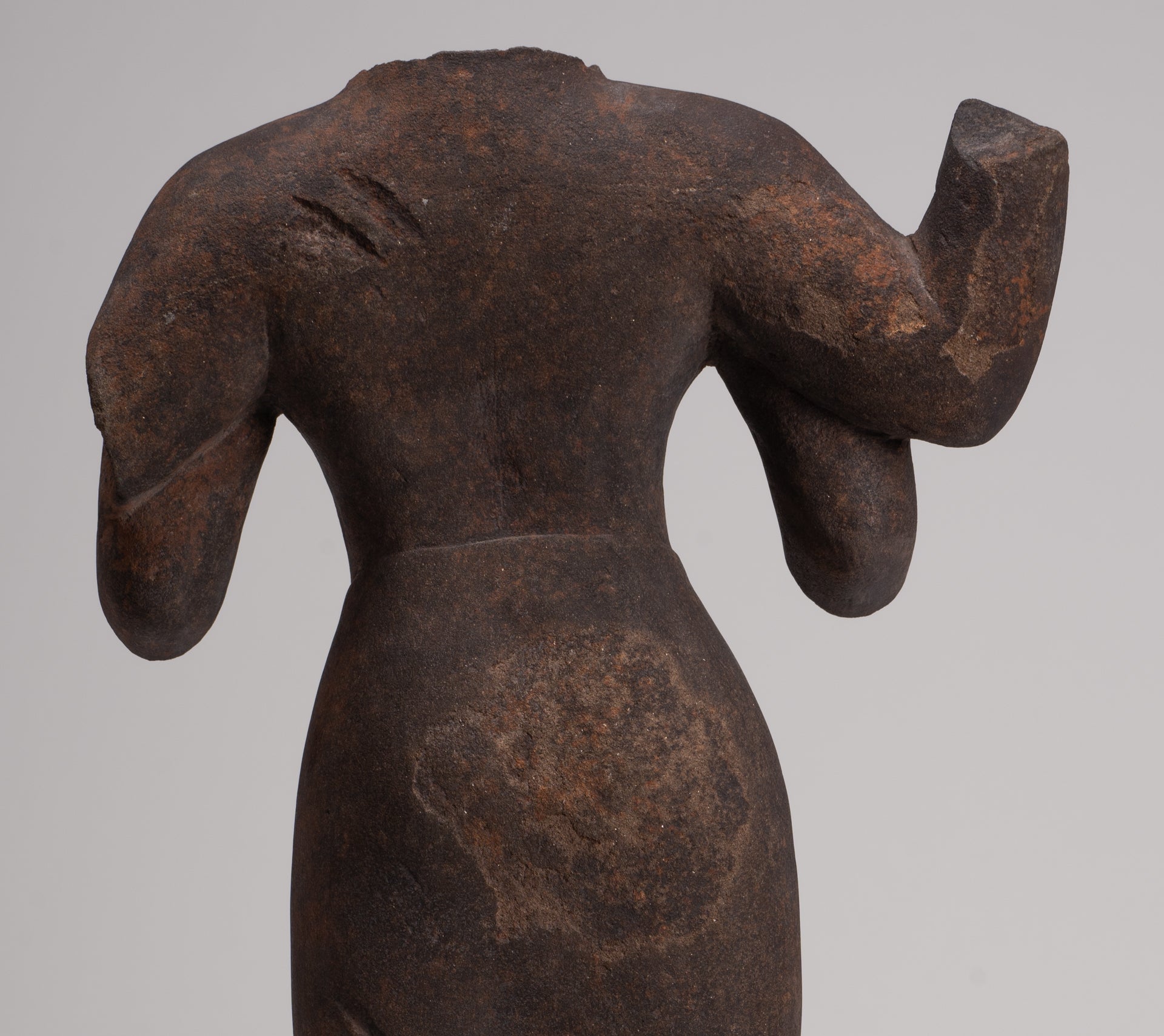-
Durga Statue - Antique Khmer Style Phnom Da Durga Mahishasuramardini Statue - 52cm/21"
Measures - (Height) 52cm/21"
An antique early 8th century Phnom Da style Durga Mahishasuramardini.
A complete example of this lovely sculpture is one of the most important early pre-Angkor-period Khmer sacred images in the National Museum in Phnom Penh (K2927).
This rare image celebrates the goddess Durga's victory over the demon-buffalo Mahishasura. An epic told in the ancient Indian Markandeya Purana and Matsya Purana!
In many ways, Durga Mahishasuramardini is a female version of Vishnu. Her origin in Indian religion is complex, and a survey of the available literature stresses her relationship to Vishnu more than to Parvati, the consort of Shiva.
Durga appears not to have been of great significance in ancient India until the fourth century, and there are no similar goddesses in the Vedic tradition. Her roots seem instead to reflect earlier indigenous non-Aryan beliefs associated with agricultural fertility and reinvigorating blood sacrifices?
According to Indian mythology, Durga's body was formed by the congealed fiery energies of all the male Hindu gods who had been enraged by their defeat at the hands of Mahi-sha, a demon that only a woman could vanquish. "Her face was formed from Shiva, her hair from Yama, her arms from Vishnu, and so on ... Shiva gave her his trident, Vishnu gave her his chakra, Vayu his bow and arrows, and so on." Thus armed by the gods and given a lion as her vehicle, "she embodied the strength of the gods," and defeated the demon.
In many related Hindu myths, Durga is associated more closely with Vishnu than with Shiva, and is often described as coming to the aid of Vishnu. The confusing identification of Durga as a form of Parvati, Shiva's consort, was derived from an unrelated myth about an unrelated goddess named Durga who threatened the world and was defeated by Parvati, who then appropriated the Durga name.
The four-armed Durga is shown standing in a relaxed pose with triple flexion on a wood base. Her raised arms would have displayed her special attributes. Typically, these include a small circular shield and a dagger, symbolizing her prowess in battle.
Durga is clothed in a long clinging sampot with a gracefully looped and knotted fold depicted in a Phnom Da style that Boisselier dated to the late seventh century, revised here to the eighth century.
This Durga image depicts none of the violence of the goddess's defeat of the demon, frequently portrayed in other Southeast Asian cultures. Instead, she is depicted as a lovely young woman, supremely confident in her achievements.
Her beauty and sensuality display the major characteristics of pre-Angkor period Khmer feminine beauty.
The distinctive patina and details of this piece are particularly appealing.
The statue has been mounted on wood plinth (later).
SATISFACTION GUARANTEE - We have been offering Asian Art, through our website, for many years and are proud of the reputation we have developed for fair and honest listings. However, if for any reason, whatsoever, you are unhappy with your purchase please just let us know and we will provide a full refund. We want you to be 100% happy with your purchase.
-
The majority of orders will be shipped with DHL. This is a secure, express and fully tracked service.
Items less than 2Kg we typically ship using Royal Mail.
Once we receive your order we try to ship all orders the same or next working day.
Large and/or fragile pieces requiring palletising, specialist crating and/or extra packaging may take a little longer. Palletised shipments will be delivered curbside.
All orders over 35 GBP will be shipped free of charge.

-
We genuinely hope that all purchases delight.
However, if they do not, regardless of reason, we will refund all orders upon receipt of the unwanted item. Just notify us within 14 days of receiving your order that you wish to make a return and send the piece back to us with 30 days of delivery.
While much about Tai Hong Gong’s life remains shrouded in mystery, his teachings on meditation, simplicity, and the cultivation of wisdom and compassion are a lasting contribution to the spiritual traditions of China and the world.
As a representative of Chan Buddhism, Tai Hong Gong exemplified the transformative potential of meditation and the quest for enlightenment.


